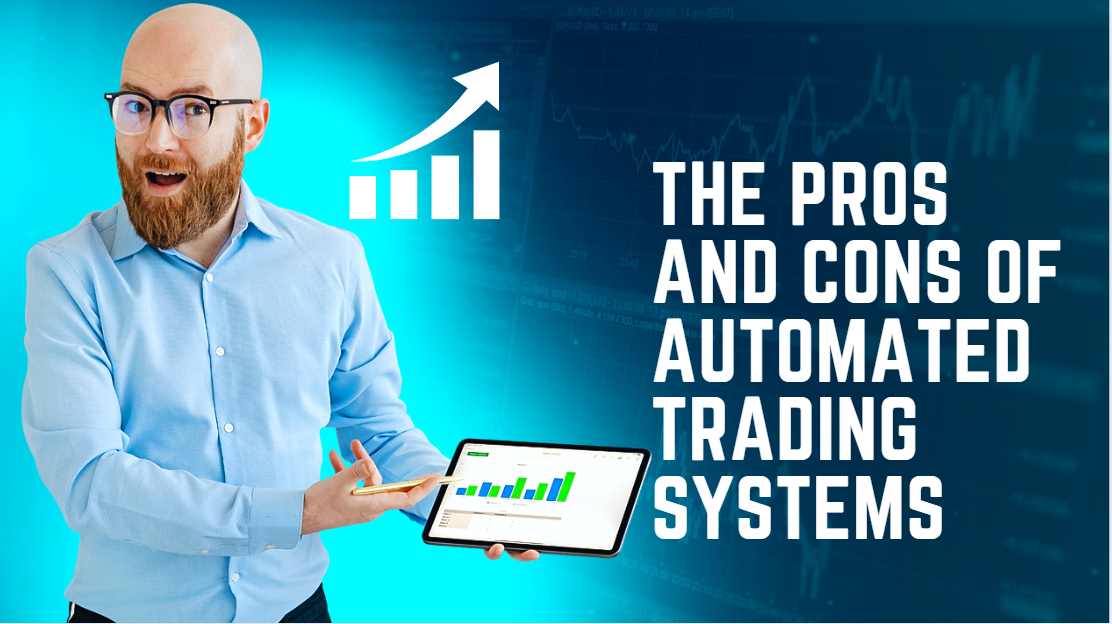Automated trading systems have become a major part of the financial world, helping traders make more efficient and strategic decisions. Whether you’re a seasoned investor or just getting started, understanding the pros and cons of automated trading systems is crucial. This article will cover what these systems are, their advantages and disadvantages, and how Machine Learning and Computational Systems (MJCS) can optimize automated trading.
1. What Are Automated Trading Systems?
Automated trading systems, or algorithmic trading, use a set of pre-defined rules to analyze market data and execute trades without human intervention. These rules are based on various technical indicators, such as moving averages and price patterns, and use historical data to predict and act on trading opportunities. The main goal is to make trading faster, more consistent, and free of emotional influence.
Key Features:
- Rule-Based: Executes trades based on specific algorithms and criteria.
- Speed: Capable of making trading decisions in milliseconds.
- 24/7 Operation: Can function round-the-clock, taking advantage of global market opportunities.
2. The Advantages of Automated Trading Systems
There are several compelling reasons why traders use automated systems. Below are the most significant advantages:
2.1. Speed and Efficiency
Explanation: Automated systems can scan market data and place trades almost instantaneously, much faster than any human trader could.
Why It Matters: This speed allows traders to capture opportunities that last for mere seconds or milliseconds, which is especially beneficial in high-frequency trading (HFT). Fast execution helps prevent slippage, ensuring trades are made at the expected price.
Example: When a sudden market movement occurs due to breaking news, an automated system can place trades before prices adjust, allowing traders to profit from rapid price changes.
2.2. Eliminating Human Emotions
Explanation: Emotional decisions can be detrimental to trading. Fear, greed, and impulsive behavior often lead to inconsistent and poor trading outcomes. Automated trading removes these emotions.
Why It Matters: With emotions out of the equation, a trader’s strategy is executed exactly as intended, leading to more disciplined trading.
Example: In times of high volatility, an automated system will not panic or hesitate to act, making decisions based solely on its algorithm, ensuring consistent adherence to the trading plan.
2.3. Back testing Capabilities
Explanation: Automated trading systems can be tested using historical data to evaluate their potential performance.
Why It Matters: This allows traders to tweak strategies and fine-tune their approach without risking actual capital. It provides insight into how a strategy would have performed under various market conditions.
Example: If a trader wants to use a moving average crossover strategy, they can back test it on data from the past five years to determine which settings provide the best returns.
2.4. 24/7 Trading
Explanation: Automated trading systems can monitor the market and execute trades 24/7, which is particularly useful for global markets such as forex and cryptocurrency.
Why It Matters: This constant vigilance allows traders to take advantage of market movements at any hour of the day, capitalizing on opportunities that manual traders would miss.
Example: An automated forex trading system can make trades in response to currency fluctuations happening in different time zones, which might be outside the trader’s normal working hours.
2.5. Scalability and Portfolio Diversification
Explanation: Automated systems can handle multiple trading strategies and assets simultaneously. This scalability allows traders to diversify their portfolios without having to monitor each trade manually.
Why It Matters: A trader can spread their risk across multiple markets or assets, potentially enhancing their portfolio’s stability and performance.
Example: One system can monitor different currency pairs, stock indices, and commodity prices, placing trades on each one based on set algorithms.
3. The Disadvantages of Automated Trading Systems
While automated trading has many benefits, it also comes with its fair share of drawbacks. Here are the most notable disadvantages:
3.1. Technical Failures
Explanation: Automated systems are heavily reliant on technology, which means they can be prone to issues like software bugs, connectivity problems, or server downtimes.
Why It Matters: Technical glitches can lead to unexpected losses, missed trading opportunities, or erroneous trades.
Example: The Flash Crash of 2010, which resulted in a sudden, rapid drop in the stock market, was partly triggered by algorithmic trading errors.
3.2. Over-Reliance on Historical Data
Explanation: Automated trading systems are typically developed using historical data to identify profitable patterns. While this helps optimize strategies, it can lead to issues if the future market doesn’t reflect past trends.
Why It Matters: Markets are dynamic, and factors like geopolitical events or new regulations can disrupt established patterns. A system built on past data might not be equipped to handle such disruptions.
Example: A trading algorithm designed to react to patterns from pre-pandemic data may not perform well in a post-pandemic market environment, where volatility and trading conditions are different.
3.3. Lack of Human Insight
Explanation: Automated trading follows set rules and cannot make intuitive or nuanced decisions.
Why It Matters: This lack of human judgment can be a disadvantage during market events that require careful analysis or understanding of complex situations.
Example: If there is unexpected news about a major corporation, a human trader can consider the broader implications before deciding on a trade. An automated system might act solely on the news item without understanding its wider context.
3.4. Initial and Ongoing Costs
Explanation: Developing and maintaining an automated trading system can be costly. Traders need to account for software, data feeds, and potential upgrades.
Why It Matters: The financial investment can be a barrier, especially for newer or smaller traders who may not have the budget for high-end systems.
Example: A complex algorithm that requires real-time market data and advanced computing may come with high initial and maintenance fees.
3.5. Market Saturation and Competition
Explanation: As automated trading has become more popular, the market has become saturated with similar algorithms. This can make it harder to find an edge.
Why It Matters: When many traders use the same strategies, it can erode profitability and lead to reduced market efficiency.
Example: A simple moving average crossover strategy might have been highly profitable a decade ago, but now, with so many traders using similar approaches, its effectiveness has diminished.
4. How MJCS Can Take Automated Trading to the Next Level
Machine Learning and Computational Systems (MJCS) are revolutionizing automated trading by making systems more intelligent and adaptable. Here’s how MJCS can improve automated trading:
4.1. Enhanced Real-Time Data Analysis
Explanation: MJCS can handle large volumes of data and process it in real-time. This allows systems to adjust their strategies based on current market conditions and trends.
Why It Matters: With real-time data analysis, MJCS can make more informed decisions, responding quickly to sudden market changes.
Example: An MJCS-enhanced trading system can analyze news articles, social media, and other data sources to anticipate shifts in market sentiment and adjust trading strategies accordingly.
4.2. Adaptive Machine Learning Models
Explanation: MJCS-powered systems use machine learning algorithms that adapt over time, learning from past performance to improve future results.
Why It Matters: This adaptability ensures that trading strategies evolve as market conditions change, maintaining their effectiveness.
Example: A machine learning model that recognizes changes in a stock’s volatility can adjust its strategy, making it more resilient in unpredictable market conditions.
4.3. Improved Risk Management
Explanation: MJCS can incorporate complex risk management protocols that monitor the potential risk of trades and adapt the system’s approach in real time.
Why It Matters: This helps limit losses and protect trading capital, offering better control over risk exposure.
Example: An MJCS-powered trading algorithm that detects increased market volatility can pause trades or switch to a safer, low-risk strategy.
5. Tips for Using Automated Trading Systems
5.1. Stay Vigilant
Even though automated systems are designed to operate independently, it’s essential to monitor them regularly to ensure they function as expected.
5.2. Start with a Trial Run
Test your automated system with a small investment before scaling up. This approach minimizes risk while you fine-tune your strategy.
5.3. Diversify Your Strategies
Don’t rely on one automated system or strategy alone. Use multiple algorithms or mix manual and automated trading to balance risk and return.
5.4. Keep Updated with Market News
Stay informed about major news and economic updates. This awareness will help you know when it might be wise to adjust or pause automated trading systems.



